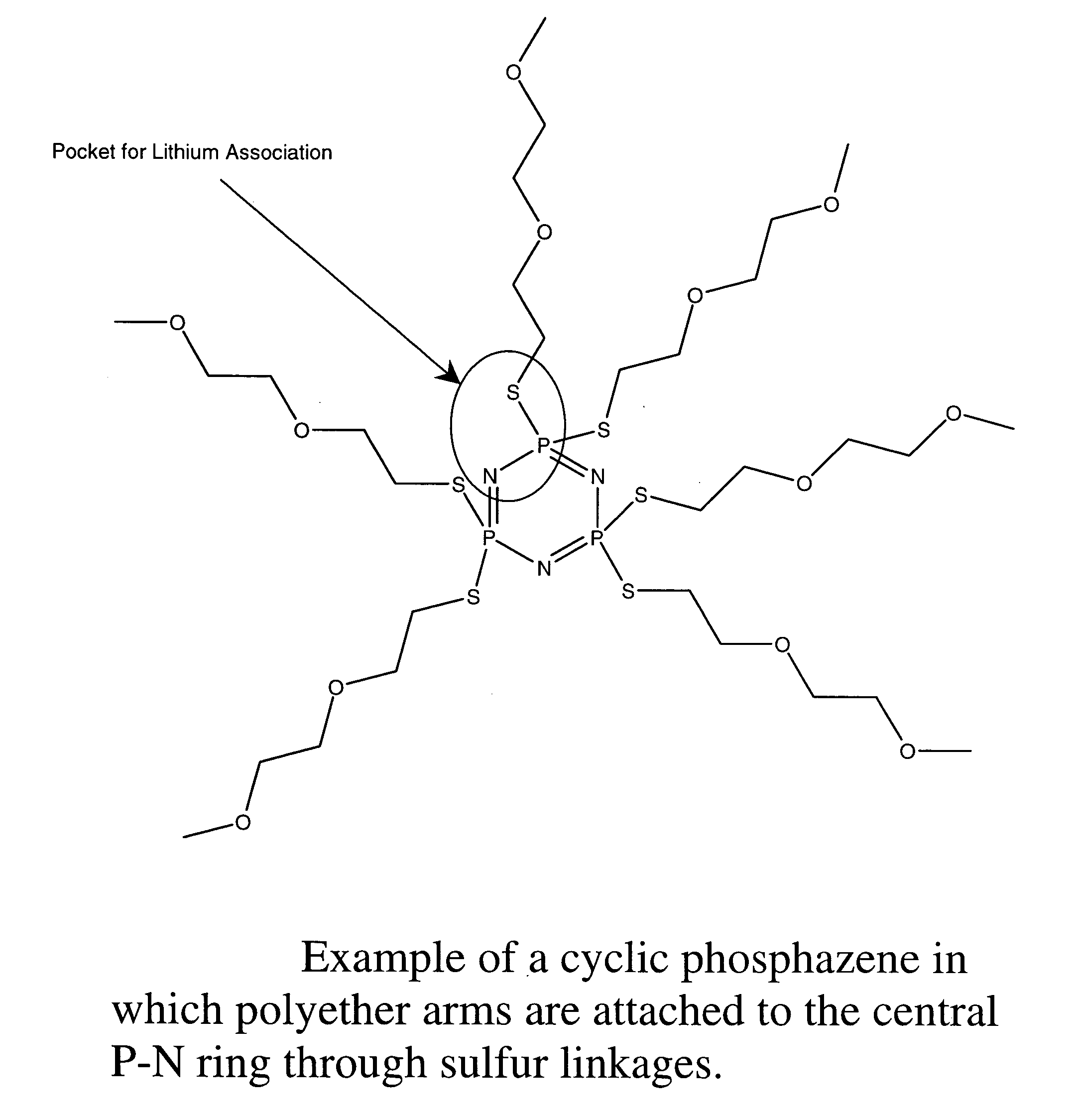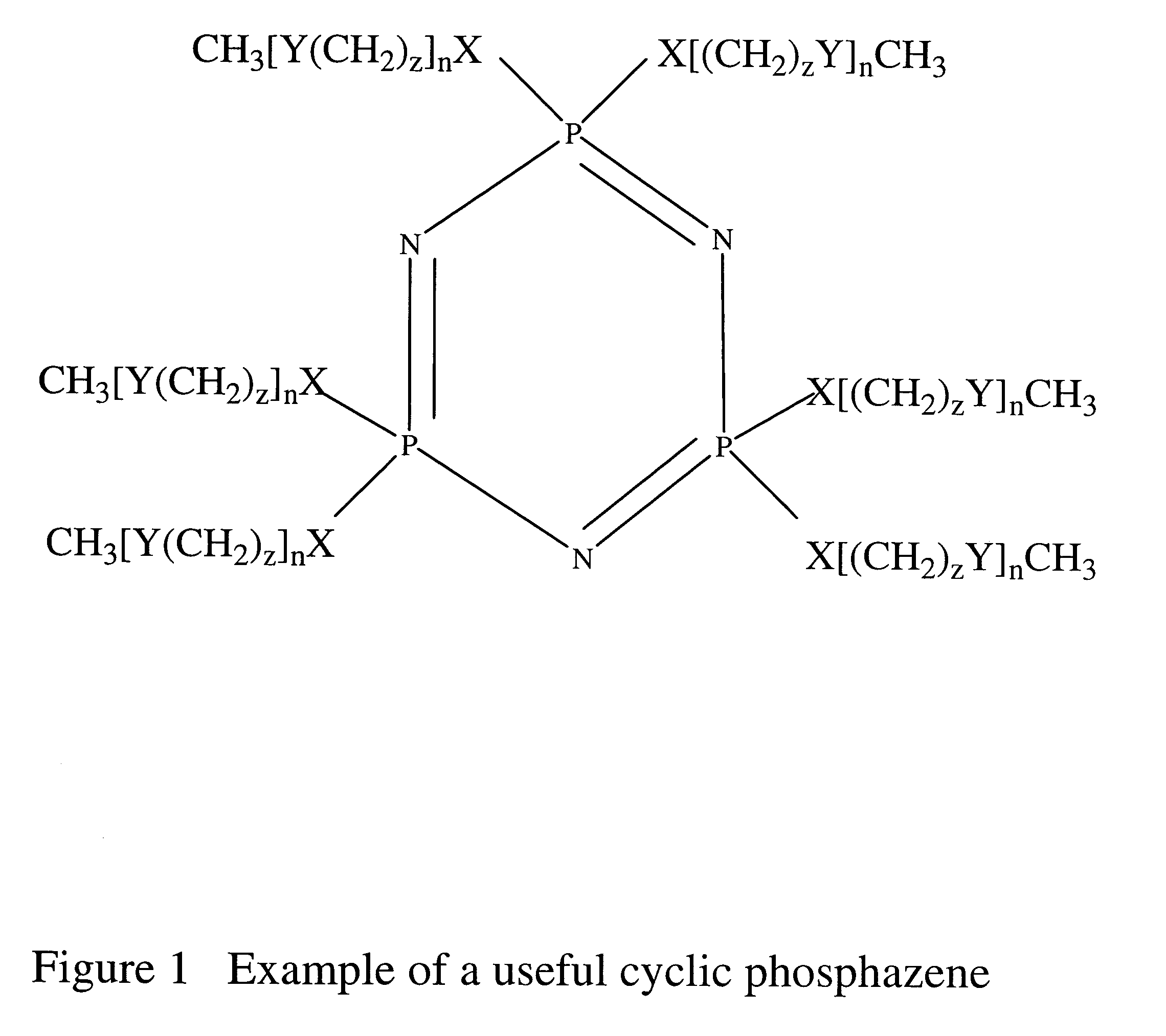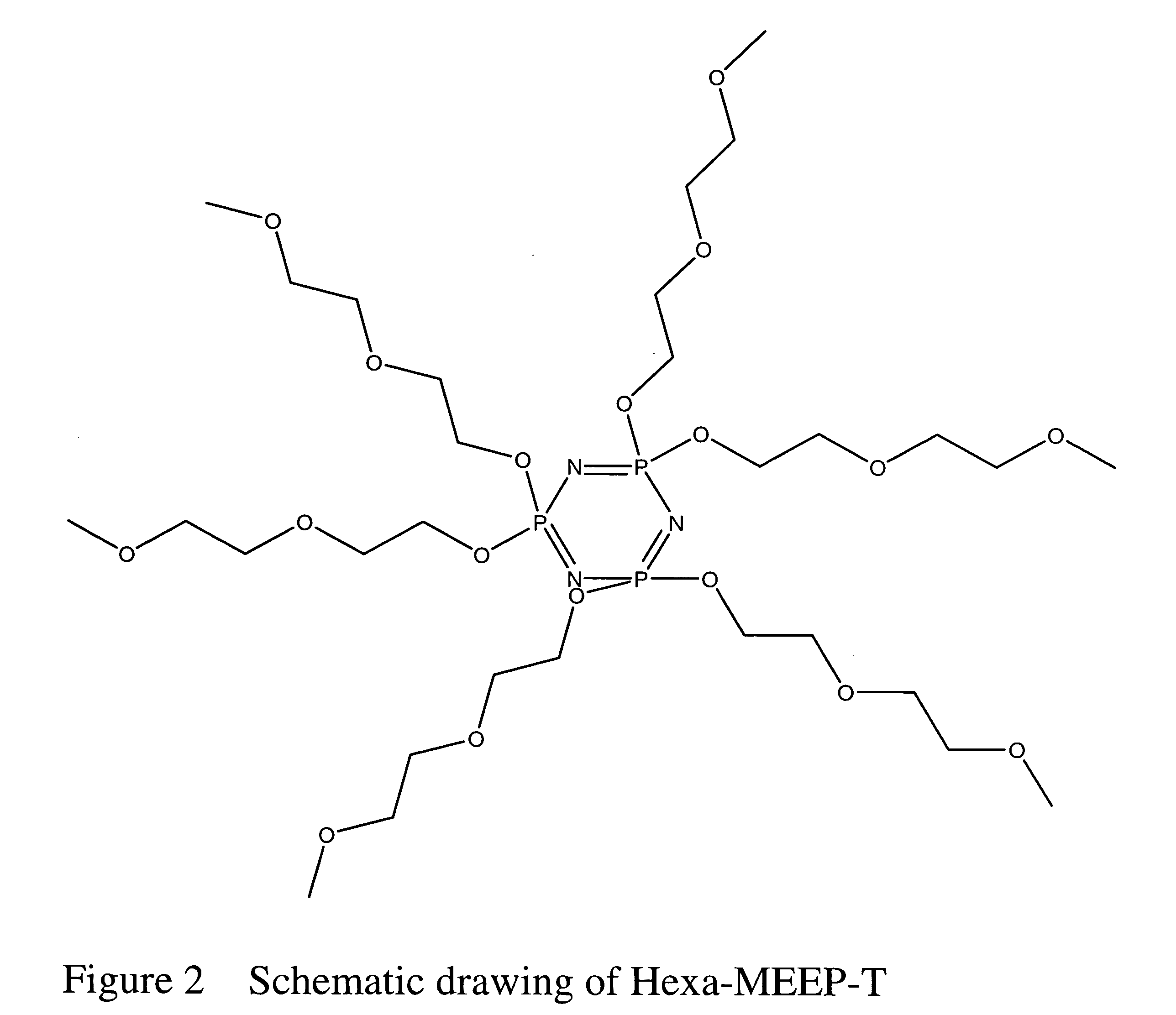Safe battery solvents
- Summary
- Abstract
- Description
- Claims
- Application Information
AI Technical Summary
Benefits of technology
Problems solved by technology
Method used
Image
Examples
example 1
Synthesis of poly[bis(2-2-methoxyethoxy)ethanethio)phosphazene] (MEET-P)
1. Preparation of Thiolate Solution:
[0060] A mechanical stirrer, N2 gas spurge, and a water condenser were added to a previously-oven-dried one liter round-bottom flask. To this apparatus was charged 37.2 grams of 2-(2-methoxyethoxy)ethanethiol (MEET) and 400 ml of anhydrous 1,4-dioxane. To this mixture was added 7.3 grams of sodium hydride (80% dispersion in mineral oil) under a N2 gas purge for an additional 30 minutes.
2. Preparation of Phosphazene Solution:
[0061] In another oven-dried flask, 10.1 grams of freshly prepared and purified polydichlorophosphazene was dissolved in 150 ml of anhydrous toluene.
3. Addition of Polydichlorophosphazene:
[0062] The polydichlorophosphazene / toluene solution was added slowly (over 30 minutes) to the stirring thiolate solution under N2 gas spurge. After the addition was completed the reaction mixture was heated to 70° C. and stirred under N2 for an additional seven ho...
example 2
A Lithium Ion Battery Prepared with Hexa-MEEP-T Solvent
[0066] A cathode, consisting of lithium cobalt oxide deposited on an aluminum and polymer current collector, and an anode, consisting of carbon deposited on a copper and polymer current collector are separated with a porous plastic separator. The electrodes and separator are placed in an air tight cell case.
[0067] A solution of Hexa-MEEP-T saturated with LiPF6 is inserted into the cell case, being careful to eliminate all gas bubbles.
[0068] The resulting battery is electrically connected to an automatic cycler. The battery cell is repeatedly charged and discharged. Electrochemical performance is monitored automatically with each cycle.
[0069] After 100 cycles, the battery performance is observed to be essentially unchanged.
example 3
Lithium Ion Battery Prepared with a Mixed Carbonate Solvent
[0070] A battery essentially identical to the previous example is prepared except that the battery solvent is a mixture of ethylene carbonate and diethylene carbonate with LiPF6.
[0071] The battery is also charged and discharged for 100 cycles. As with the previous example, there is very little change in electrochemical performance in the battery.
[0072] The significance of the last two examples includes that Hexa-MEEP-T functions as an effective battery solvent.
PUM
 Login to View More
Login to View More Abstract
Description
Claims
Application Information
 Login to View More
Login to View More - R&D
- Intellectual Property
- Life Sciences
- Materials
- Tech Scout
- Unparalleled Data Quality
- Higher Quality Content
- 60% Fewer Hallucinations
Browse by: Latest US Patents, China's latest patents, Technical Efficacy Thesaurus, Application Domain, Technology Topic, Popular Technical Reports.
© 2025 PatSnap. All rights reserved.Legal|Privacy policy|Modern Slavery Act Transparency Statement|Sitemap|About US| Contact US: help@patsnap.com



